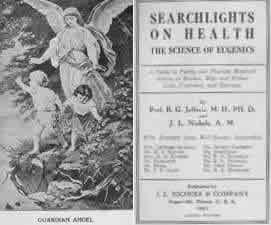

Where Research Will Happen: The Traditional Library
The traditional library has received some bad press over the past few years. It's been described as archaic, primitive, and outdated. Some futurists have even predicted its demise. Nothing could be further from the truth. In fact, from 1996 through 2000, communities in the United States spent $3 billion renovating or building public libraries, and the purchase of paper books and journals continues at a steady pace. The physical library, along with its physical collection, is an essential and important component of any community, whether that community is a city, a school, or a corporation.
Traditionally, four broad types of libraries have been identified:
- School
- Public
- Special
- Academic
Academic libraries
are quite different from the other three and have a unique mission. Unlike
school or public libraries, they exist to provide in-depth coverage for
serious researchers. And, unlike special libraries (medical libraries
or the library at Ford Motor Company), they collect broadly and deeply
in all disciplines. Academic librarians must be prepared to support any
viable research topic and nearly every level of investigation. Consequently,
books in academic libraries are seldom discarded because the content of
every book is a piece of the total universe of human knowledge. For example,
the book Searchlights on Health, The Science of Eugenics,  (click
on the image to view a larger image) published in 1921, advocates eradication
of poverty, disease, and crime through eugenics, the "science" of human
engineering. That book may provide a wealth of information for historians,
public policy students, and philosophers, even though the "science" the
book contains is now considered worthless and discredited by all. In other words, you'll
find books and other material in an academic library that you will not
find in any other type of library. So when futurists make predictions
about libraries, it's important to identify which type of library they
have in mind. The traditional academic library will never fade
away or be replaced by a digital library. Traditional and digital academic
libraries will coexist, and both will continue to grow rapidly. In fact,
when using the tools found in the digital library, it will be difficult
to ignore the traditional library, because so many of the records found
in the digital library refer to traditional paper sources.
(click
on the image to view a larger image) published in 1921, advocates eradication
of poverty, disease, and crime through eugenics, the "science" of human
engineering. That book may provide a wealth of information for historians,
public policy students, and philosophers, even though the "science" the
book contains is now considered worthless and discredited by all. In other words, you'll
find books and other material in an academic library that you will not
find in any other type of library. So when futurists make predictions
about libraries, it's important to identify which type of library they
have in mind. The traditional academic library will never fade
away or be replaced by a digital library. Traditional and digital academic
libraries will coexist, and both will continue to grow rapidly. In fact,
when using the tools found in the digital library, it will be difficult
to ignore the traditional library, because so many of the records found
in the digital library refer to traditional paper sources.
Consider, too, the universe of human knowledge. Writing began more than 4,000 years ago. From the time the first Sumerian scribe etched the first business transaction into wet clay until now, billions of pages of printed material have been collected by libraries. While it would be impossible to estimate, it is safe to assume that only an infinitesimal amount of that material is available on the Internet. The temptation to ignore the resources of the traditional library is strong; however, it is so rich in knowledge and so unique in what it contains that you jeopardize the quality of your research if you ignore it.
![]()
![]()
These pages were
written by Glenn Remelts.
and edited by Jeffrey L. Nyhoff and Nancy Zylstra
©2005 Calvin University (formerly Calvin College), All Rights Reserved
If you encounter technical errors, contact computing@calvin.edu.